We may receive a commission when you use our affiliate links. However, this does not impact our recommendations.
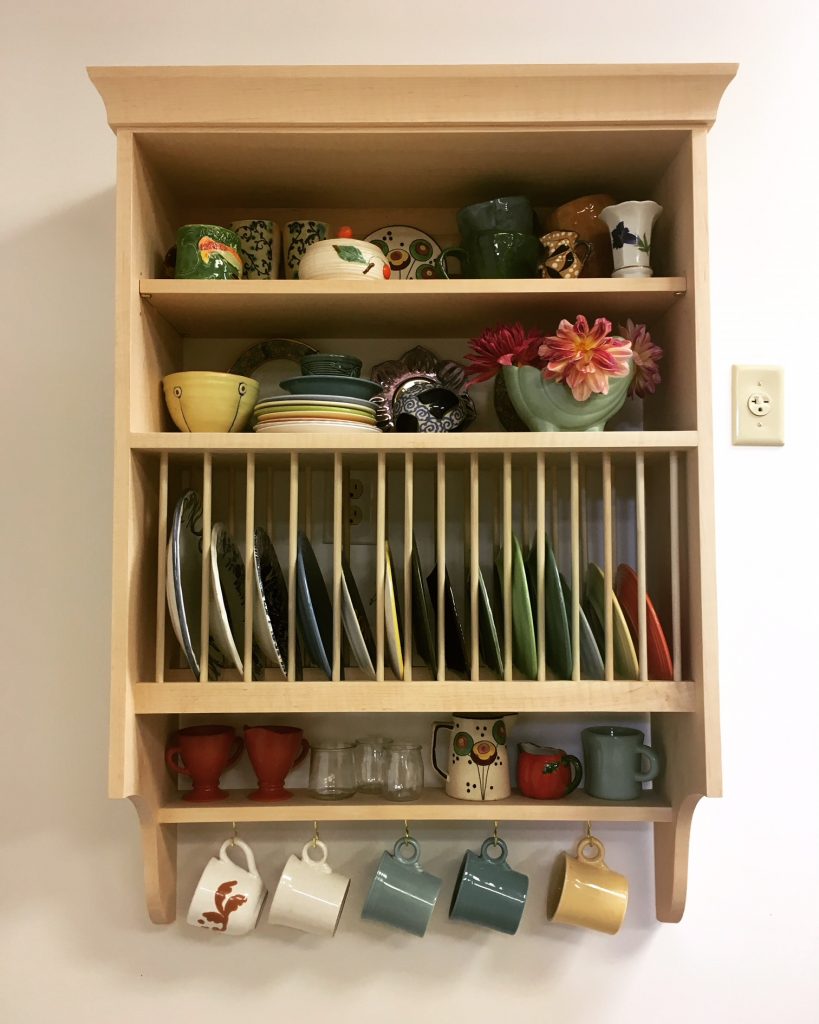
This plate rack will be included in my book about kitchens for Lost Art Press. I will also be teaching a class on how to build it at the Lost Art Press storefront June 22-23, 2019.
We all have our influences, whether we’re aware of them or not–those people and works that make an impression so powerful they shape our own designs.
I have strong memories of mine. They include the pale wooden bed glimpsed in a London furniture store window circa 1978. I no longer recall the precise design; what stuck with me were the clean lines and marble-like pallor of the matte-finished wood. A second is the Shaker cabinet I saw at the workshop of Ian Ingersoll in Connecticut on a visit to New England in 1986, when I was considering moving back from England to the States; the first example of Shaker-style furniture I’d encountered, it launched my love affair with the Shaker aesthetic. A third is the Edwardian hall stand I found in 1995 among the pages of a book about home conversions; it would later inspire my first piece for Fine Woodworking Magazine and launch my research into the Harris Lebus furniture company, which I wrote about in my most recent book, English Arts & Crafts Furniture. I see such pieces and something about them lodges in my psyche, where their spark of inspiration may lie dormant for years (sometimes decades) before finding expression in a piece of my own design.
Designing a Traditional Plate Rack – Part 1
Designing a Traditional Plate Rack – Part 2
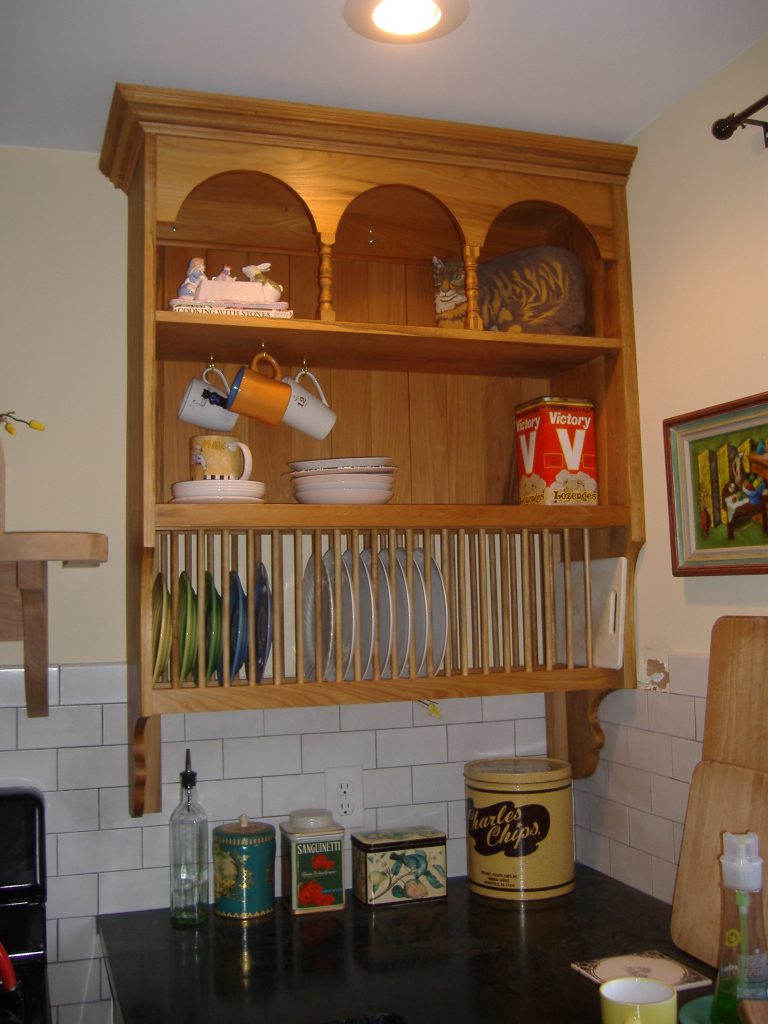
The plate rack I built for our previous home clearly shows the influence of my first woodworking employer, Roy Griffiths.
And then there’s my first truly professional piece, a kitchen dresser top I built for Mrs. Rosemary C. of Fulham, in south-west London. The year was 1980; I was 21. I may have been the one who gave the dresser top 3-dimensional expression, but the true genius of the piece was in its design–the product of my first woodworking employer, Roy Griffiths, who had recently started a kitchen design and cabinetmaking business. (All of this is chronicled in Chapter 2 of my book Making Things Work.)
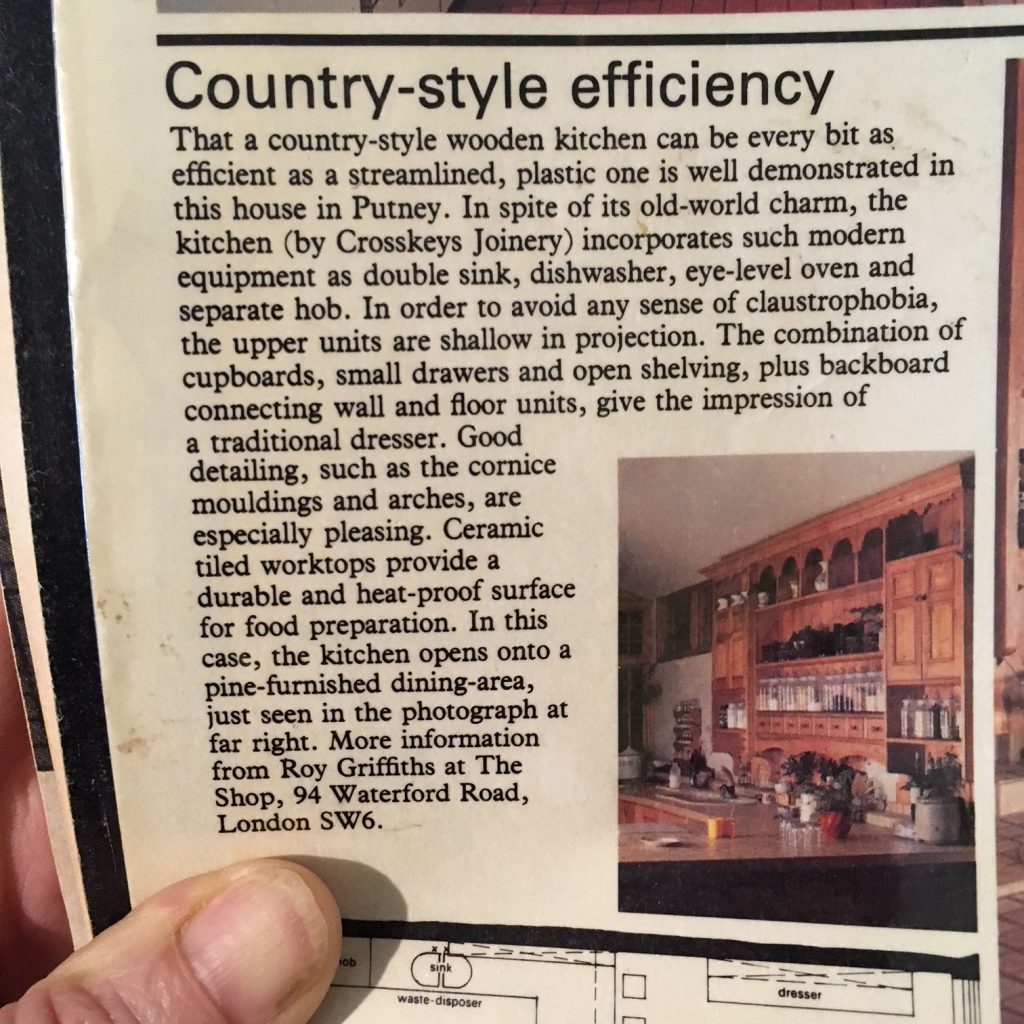
The write-up about the kitchen in House & Garden Magazine, July 1981.
When I visited Roy’s shop, the Crosskeys Joinery, he showed me the drawing for the piece. I was blown away; I had to build it. In those days I didn’t have a camera, so I have few pictures documenting the time. But the year after Roy’s installation crew had fitted the dresser top into its new home (along with its companion cabinets, which were built by someone else), Roy gave me a copy of House & Garden Magazine in which the kitchen was featured with 11 other “kitchen solutions.” (Unfortunately the kitchen was described as “country-style.” “Victorian” would have been more apt.)
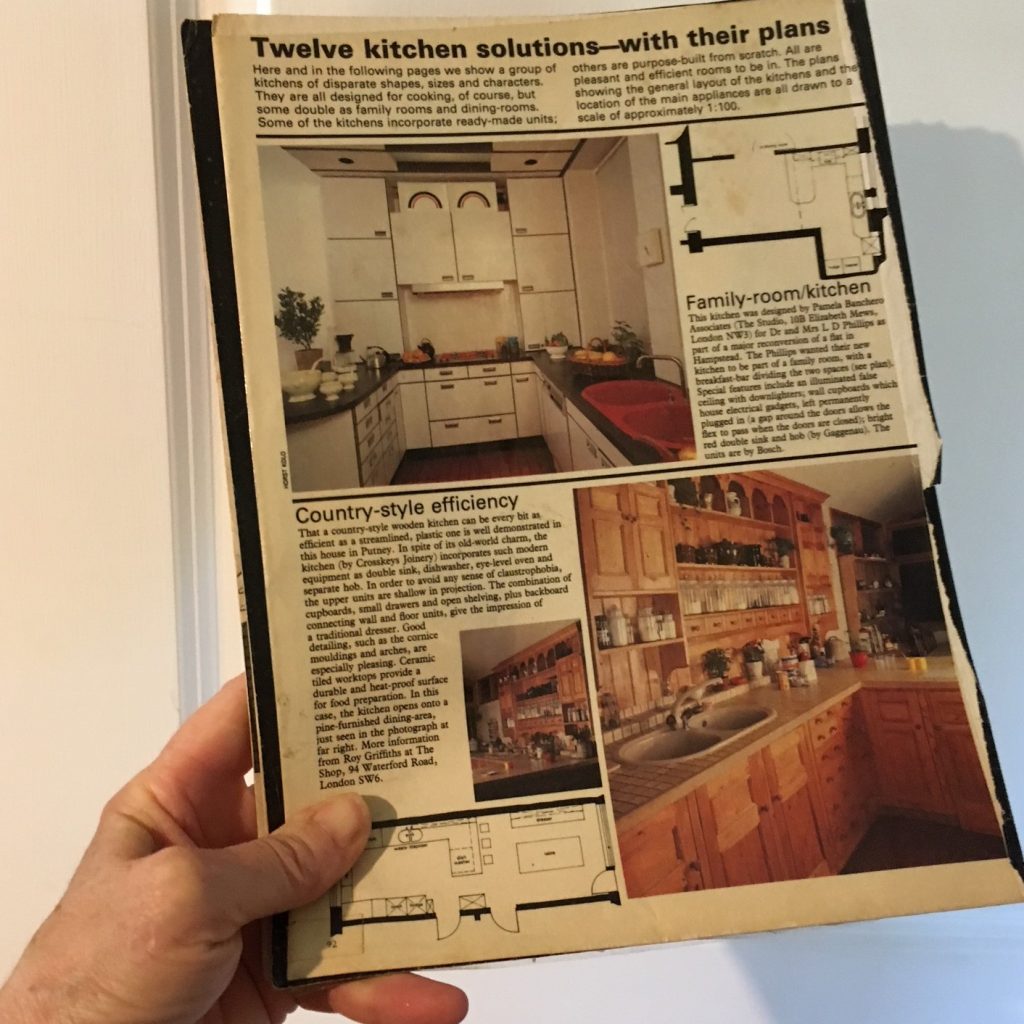
A view showing the base cabinets, counter, and sink
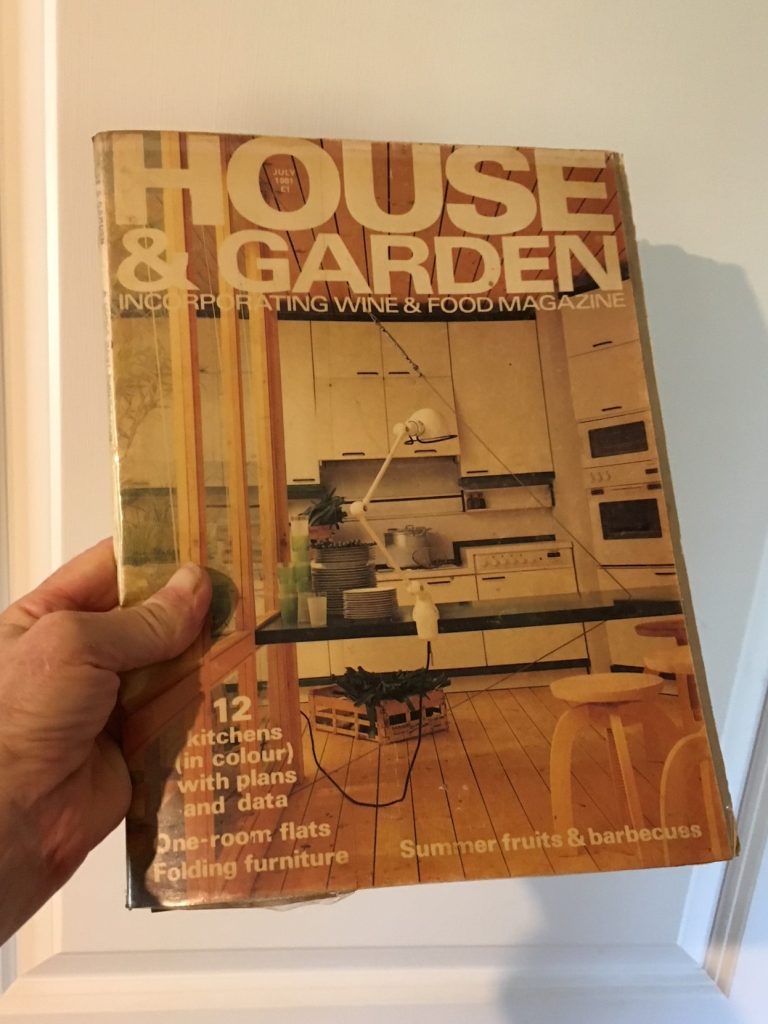
I’m always tickled by instances in which contemporary trends turn out to have been foreshadowed. This cover kitchen from 1981 would be just as at home on the cover of a magazine today, almost 40 years later.
I hadn’t planned to build cabinetry for kitchens. My training was in traditional furniture making. But working for Roy introduced me to a new dimension of woodworking, one that would turn out to be a mainstay of my business–not just financially, but in terms of creative opportunities. Roy was a painter, not a cabinetmaker, by training. He had graduated with a degree in Fine Arts from the Slade School of Art. He paid as much attention to proportions and moulding details as he did to joinery and finishing. I will always be grateful to him, not just for sharing his insights about design and invaluable lessons about the business side of woodworking, but for introducing me to the radical notion that kitchens could be a focus of furniture making that’s every bit as stimulating and satisfying as work for more formal rooms of the house.
__
Next week I’ll talk about another designer who has influenced not just my thinking about kitchens (and plate racks), but whose work has had such extensive global reach that many people aren’t even aware that their cabinets or hardware bear the impress of his design.
 Explore the Arts & Crafts movement with a unique focus on English designers. Through examination of details, techniques, and historical context, as well as projects, you’ll discover what sets these designers and their work apart from those that came before and after, as well as gain a deeper understanding of the Arts & Crafts movement and its influence.
Explore the Arts & Crafts movement with a unique focus on English designers. Through examination of details, techniques, and historical context, as well as projects, you’ll discover what sets these designers and their work apart from those that came before and after, as well as gain a deeper understanding of the Arts & Crafts movement and its influence.
Get your copy of Nancy Hiller’s English Arts & Crafts Furniture.
Here are some supplies and tools we find essential in our everyday work around the shop. We may receive a commission from sales referred by our links; however, we have carefully selected these products for their usefulness and quality.








